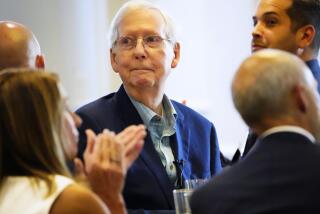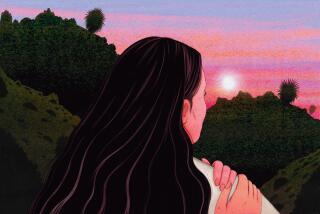Sharon Monsky, 48; Health Activist
Sharon Monsky, who was diagnosed with the little-known life-threatening disease scleroderma and spent 16 years raising millions of dollars to fund research to find a cure, has died. She was 48.
Monsky died of scleroderma--which afflicts 300,000 Americans, most of them women in the prime of their lives--May 11 in Santa Barbara.
Diagnosed with the disease, which hardens the skin and compromises the internal organs, in the early 1980s, Monsky decided to fight back and launched the Scleroderma Research Foundation.
The Santa Barbara-based Foundation is the only organization in the nation dedicated exclusively to finding a cure for the degenerative disease.
As the illness continued to take its toll, Monsky traveled to research labs and to the halls of Congress, rallying allies, including Sen. Barbara Boxer (D-Calif.).
She also found support from entertainment figures such as comedians Robin Williams and Bob Saget, who have appeared at her annual fund-raisers.
“Sharon put the disease on the map,” said Charles Spaulding, vice president of the foundation. “If it weren’t for her, then the research would not be where it is today.”
Through Monsky’s efforts, the foundation has become the major private health and research organization dedicated to finding a cure for scleroderma and has raised more than $14 million for research.
The foundation funds two research centers, the San Francisco Bay Area Scleroderma Center at UC San Francisco and the East Coast Scleroderma Research Center at Johns Hopkins University in Baltimore.
“Sharon has made a momentous difference, both to science and to all who were fortunate to touch her life,” Dr. Bruce Alberts, president of the National Academy of Sciences, said in a statement.
“When first diagnosed with scleroderma, she quickly and effectively recruited some of the nation’s best scientists to create a unique and collaborative research program that has made many important insights into this mysterious disease,” he said.
A native of Omaha, Monsky was a nationally ranked figure skater as a teenager.
She graduated at the top of her class at Pitzer College in Claremont with a bachelor’s degree in economics.
By the early 1980s, she had earned an MBA from Stanford University and was a rising star at McKinsey & Co., an international management-consulting firm in San Francisco.
But in 1981, she began feeling chronically tired. Then her joints began to ache. When she finally went to the doctor, she could barely grasp a pen or bend over to tie her shoes.
Scleroderma is often misdiagnosed and Monsky spent 18 months visiting numerous doctors before she received the correct diagnosis.
“One doctor, obviously knowing little of the disease, told me I had only ‘a handful of months’ to live,” she told the Chicago Tribune in 1993. “I decided right there and then that I was not going to place my life in the hands of someone who was saying that I was not going to make it, but didn’t know why.
“I was going to give it my best effort to beat this disease and make a contribution in my lifetime that might help others to not suffer.”
By 1985, her worsening condition forced her to resign from McKinsey & Co. By then, she was severely arthritic, had only 50% lung capacity and was covered with open sores on most of her body.
The next year, using a borrowed conference room in San Francisco, she and a group of family and friends conducted the first meeting of the Scleroderma Research Foundation.
In 1990, determined to make Congress aware of scleroderma and the need for funding of research at the government level, Monsky began lobbying lawmakers in Washington and testifying before congressional committees.
She was appointed to an advisory board of the National Institutes of Health.
She took her cause to Hollywood celebrities. “Cool Comedy--Hot Cuisine,” the foundation’s annual fund-raiser, has featured Garry Shandling, Lily Tomlin and many other top comedians, and has raised more than $1 million.
Monsky had a cameo role as herself in “For Hope,” a 1996 TV movie on ABC about scleroderma directed by actor-comedian Saget, whose sister, Gay, died of the disease.
By then, the disease had assaulted all of Monsky’s vital organs. The skin on her face had tightened so much that she could not close her lips and had difficulty enunciating words.
“Sharon is the person who singularly decided that the only way to cure this disease is to raise money to do just that,” said Saget, who met Monsky about 12 years ago when he performed in the “Cool Comedy” benefit for the first time.
Since then, he said, Monsky “became a sister to me.”
“She’s the most beautiful person, the most beautiful spirit, I’ve ever seen. Her spirit is what drove this organization.”
Monsky is survived by her husband, Mark Scher; a son, Max; two daughters, Samantha and Montana; her mother, Ramelle Monsky of Palm Desert; a sister, Robin of Chicago; and a brother, Henry Monsky of Omaha.






